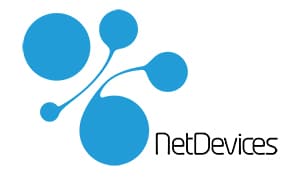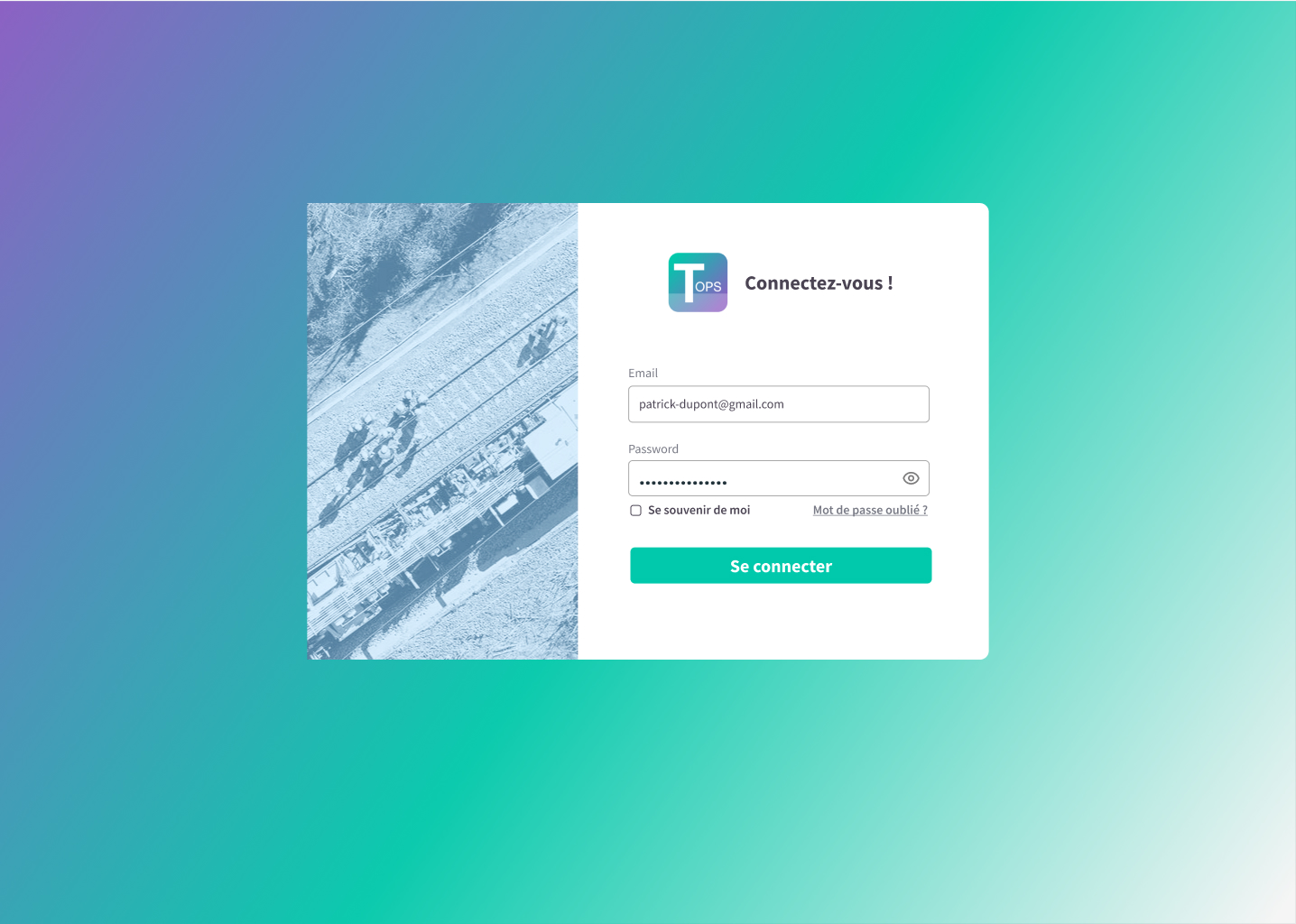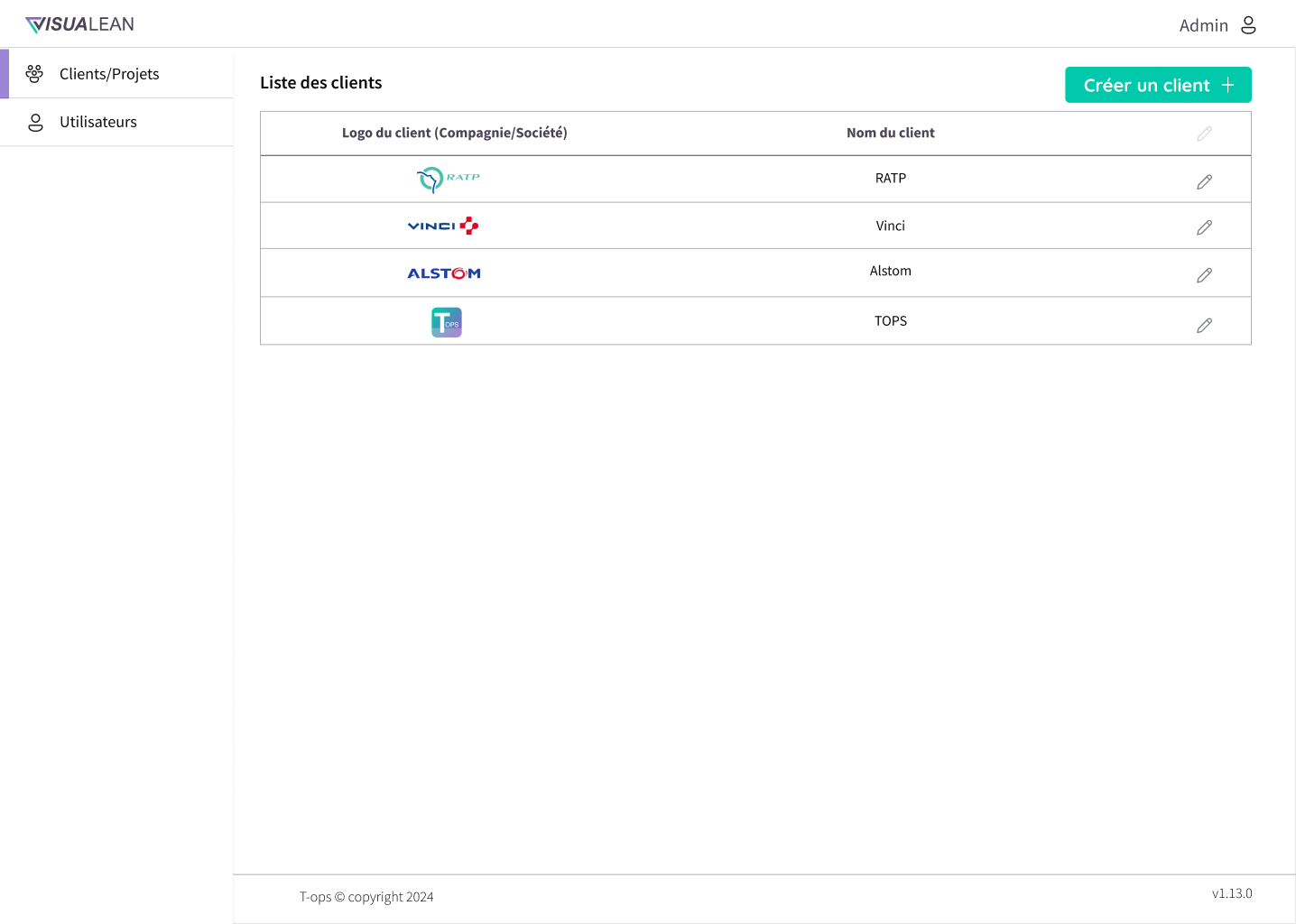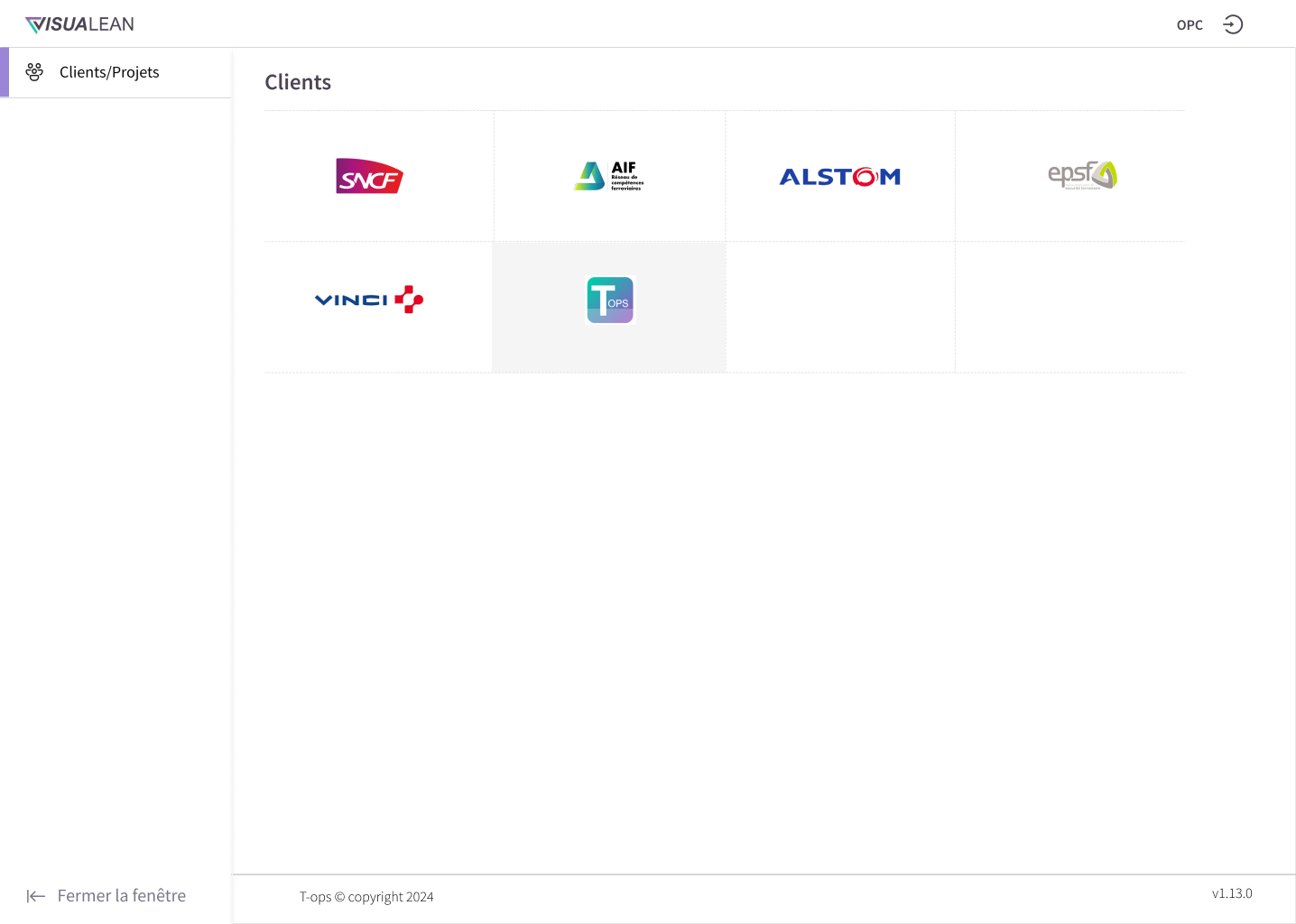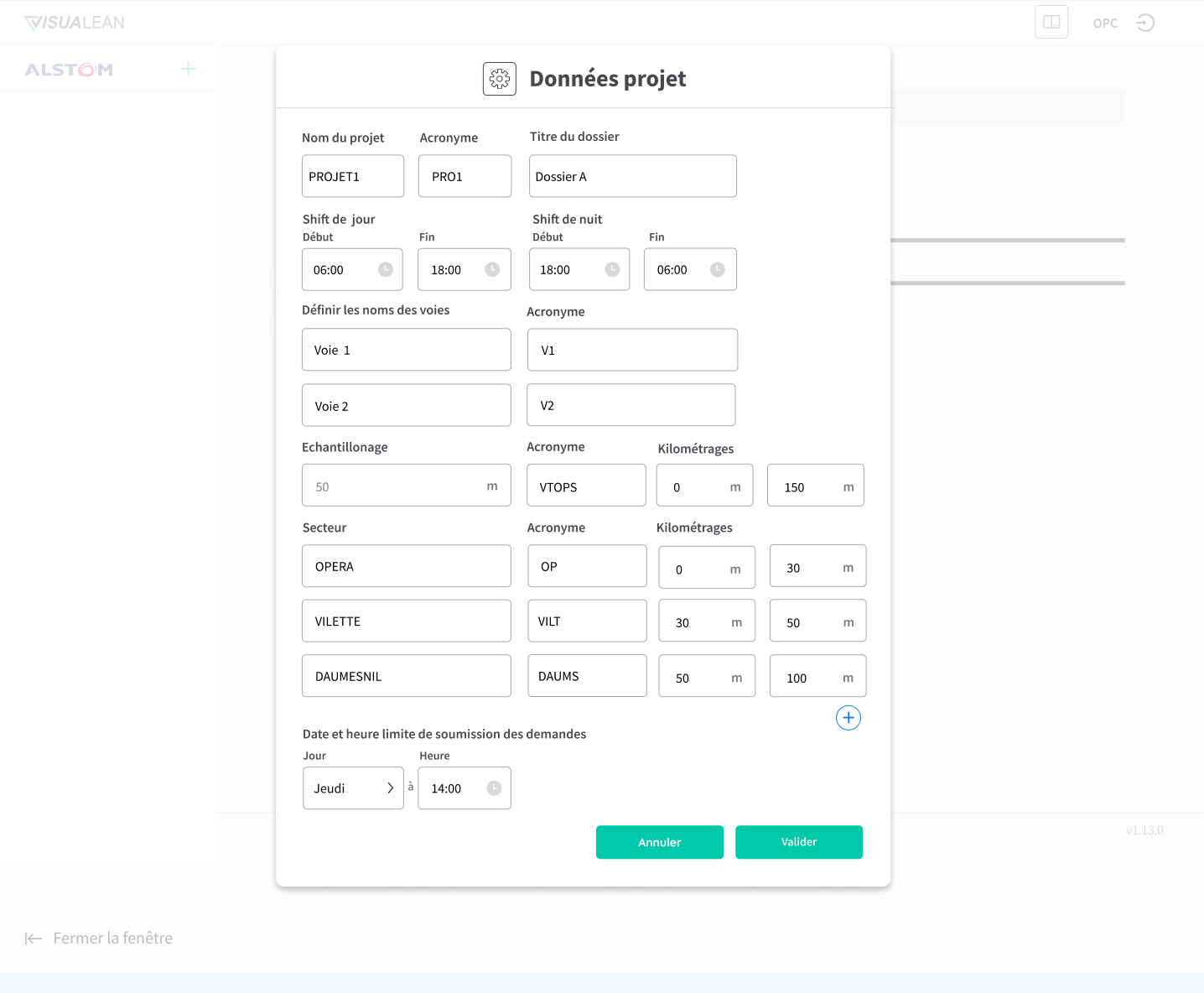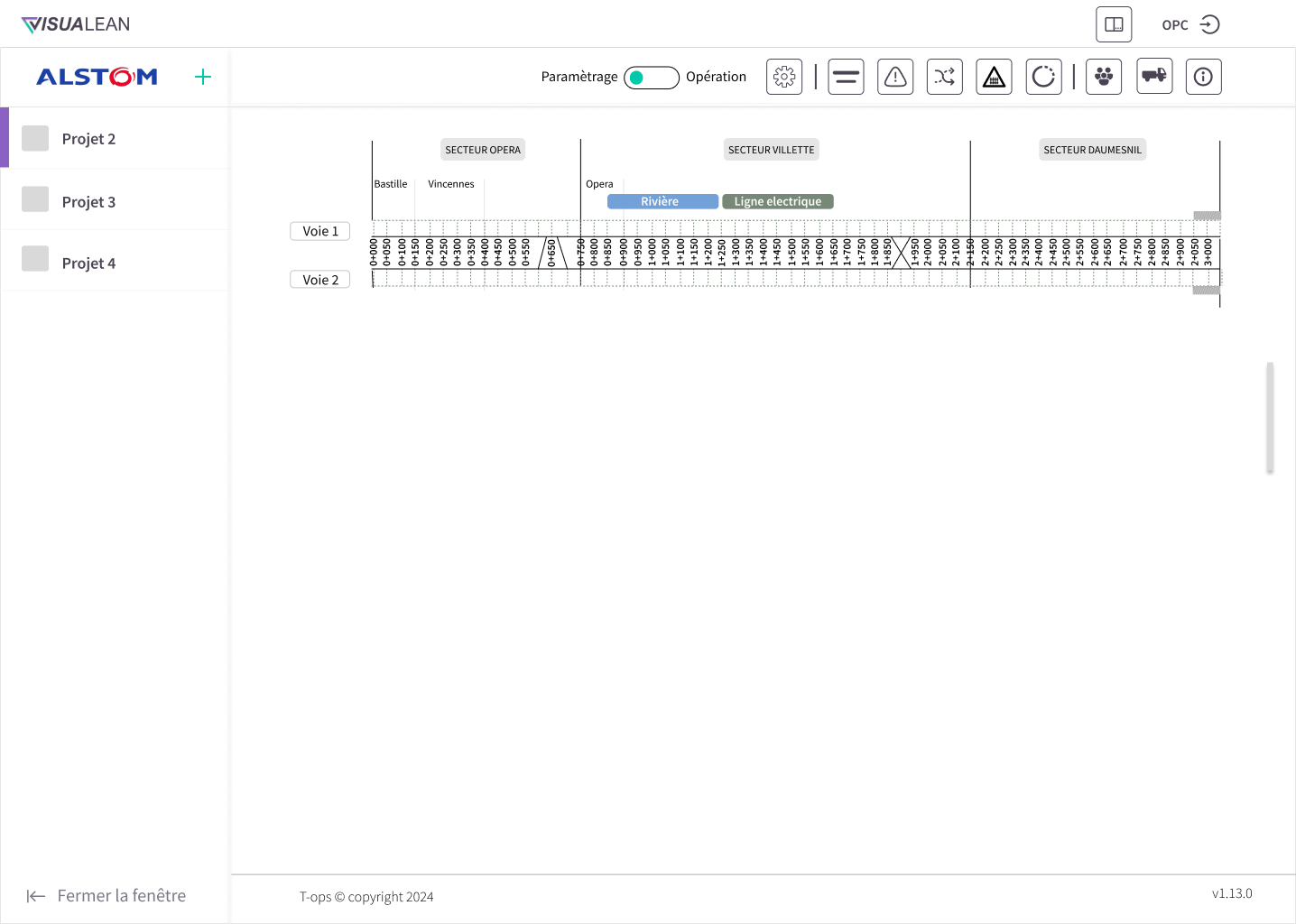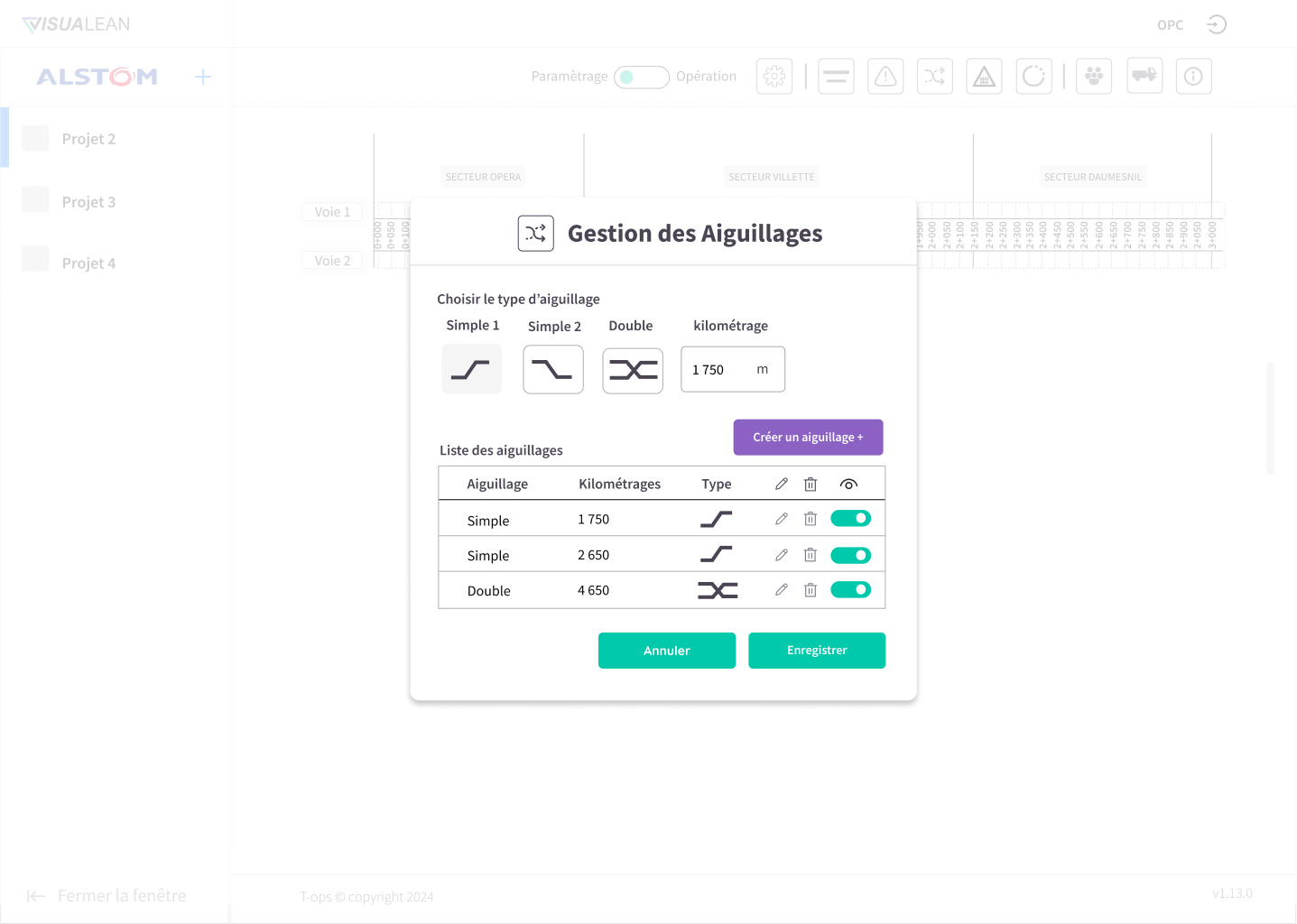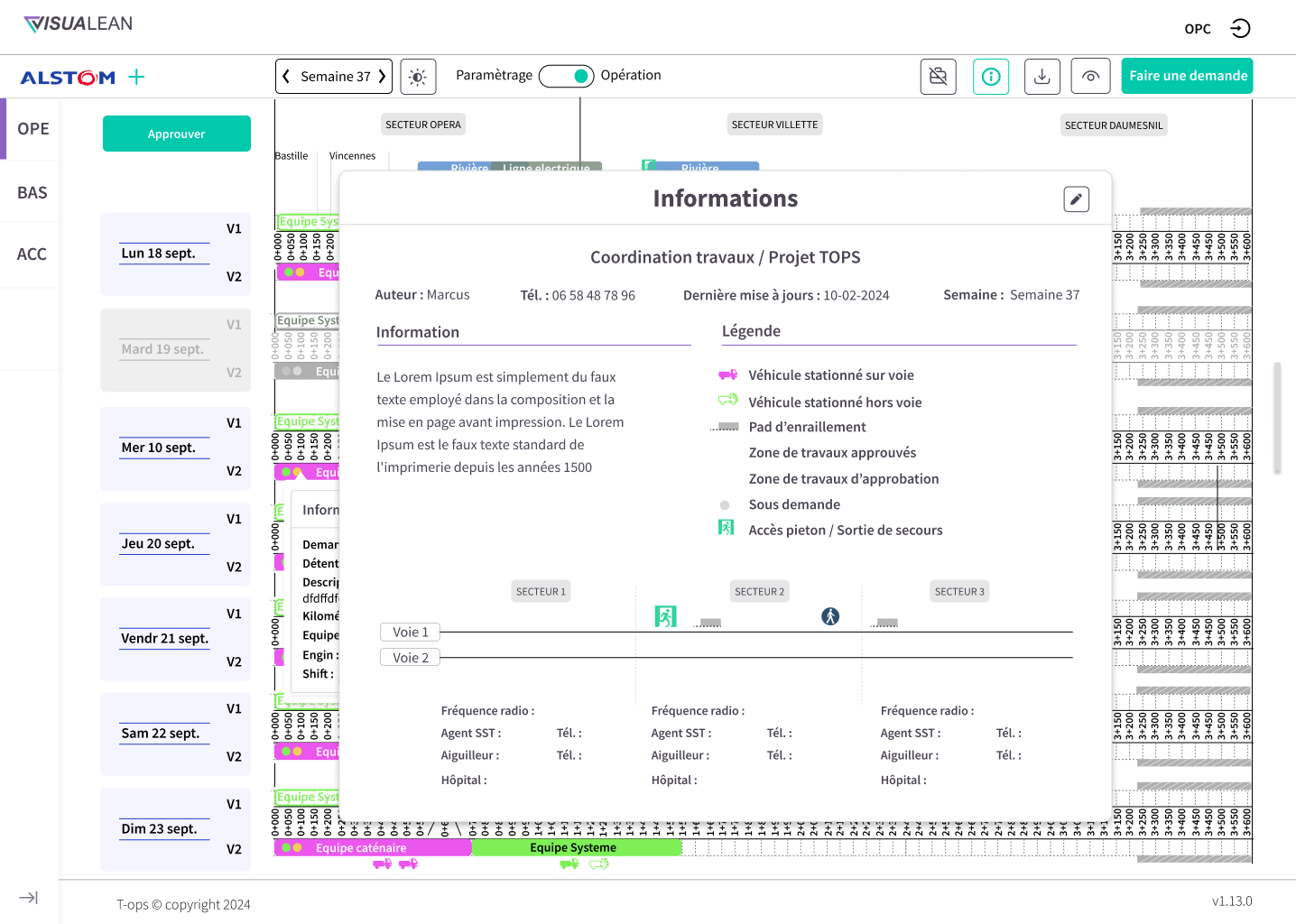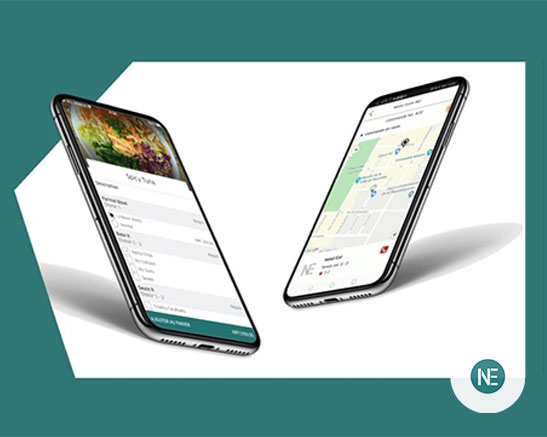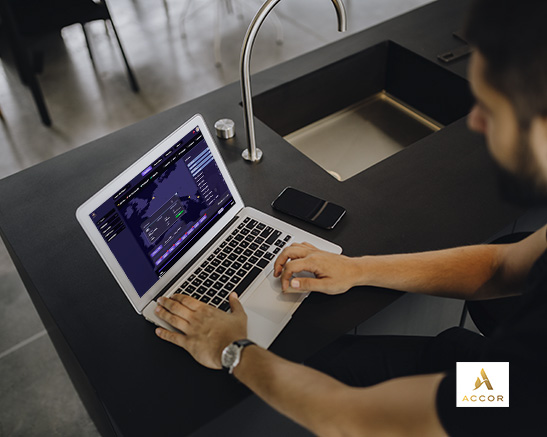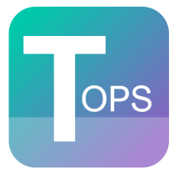
NetDevices a développé la plateforme T-Ops
pour la planification des travaux ferroviaires
T-Ops, est un outil d’accompagnement
pour les équipes chargées de coordonner les travaux
sur les chantiers de construction ferroviaire.
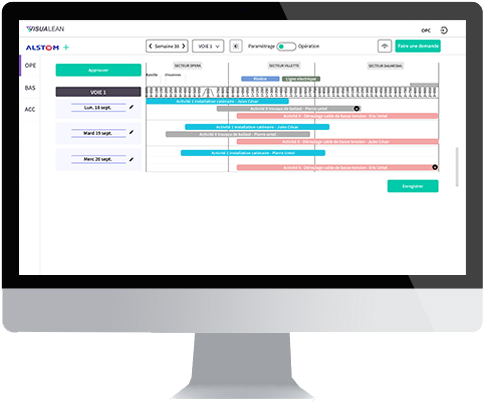
À propos
T-Ops (Tracks-Operations Planning Strategy) a fait appel à NetDevices pour designer et développer une plateforme qui sera un outil d’accompagnement pour les équipes opérationnelles chargées de coordonner les travaux sur les chantiers de construction ferroviaire.
Contexte
La plateforme T-Ops facilite la planification efficace des travaux ferroviaires en permettant la création de projets via des formulaires, la soumission de demandes de travaux, la gestion des conflits sur les voies, ainsi que les ajustements journaliers nécessaires. Cette solution est utilisée par deux types d’utilisateurs :
- Les détenteurs : ces chefs d’équipe, présents sur le terrain, utilisent les documents produits par T-Ops pour diriger les travaux de manière efficace. Ils sont responsables de la mise en œuvre des tâches et rapportent aux demandeurs.
- Les demandeurs : ces responsables de travaux supervisent l’installation de systèmes conformément à un planning et un budget préétablis. Ils peuvent gérer plusieurs équipes et détenteurs, assurant ainsi la coordination globale des projets ferroviaires.
NetDevices a mis en place un simulateur simple qui vous permettra d’obtenir une estimation des coûts pour votre projet.
Solution(s)
Schématiser la coordination complexe des travaux ferroviaires avec l’outil de design Figma. Cet outil comprend l’organisation établie par les équipes qui garantissent la bonne coordination du projet.
Impact
La plateforme T-Ops Ferroviaire optimise la coordination des travaux, améliore l’utilisation des ressources, réduit les retards et les interruptions, renforce la sécurité sur les chantiers, et permet une prise de décision basée sur les données, assurant ainsi des projets ferroviaires plus efficaces et sécuritaires.
Les technologies




Défis
Le défi pour le design de cette plateforme ferroviaire réside dans la représentation visuelle efficace de la coordination complexe des travaux sur les voies ferrées sur Figma. Voici comment je développerais ce défi :
- Schématisation de la coordination des travaux ferroviaires : Le premier défi consiste à créer des schémas clairs et compréhensibles qui représentent visuellement les différentes étapes et processus impliqués dans la coordination des travaux ferroviaires. Cela inclut la planification des travaux, l’allocation des ressources, la gestion des équipes sur le terrain, etc.
- Organisation des équipes et des détenteurs : Un aspect crucial du design serait de représenter l’organisation des équipes impliquées dans les travaux ferroviaires, ainsi que les détenteurs responsables de la coordination et de la supervision de ces équipes. Il faudrait mettre en évidence les relations hiérarchiques entre les détenteurs et les demandeurs, en indiquant clairement les rôles et responsabilités de chaque partie.
- Visibilité des documents et des données : La plateforme doit également permettre aux détenteurs et aux demandeurs d’accéder facilement aux documents et aux données nécessaires à la bonne exécution des travaux. Cela pourrait inclure des plans de travail, des budgets, des calendriers, des rapports d’avancement, etc. Le défi consisterait à concevoir une interface intuitive qui facilite la navigation et la recherche de ces informations critiques.
- Interface utilisateur intuitive : Enfin, le défi principal serait de créer une interface utilisateur conviviale et intuitive qui offre une expérience utilisateur optimale pour les détenteurs et les demandeurs. Cela implique de concevoir des fonctionnalités interactives, des menus faciles à naviguer, des boutons d’action clairs, et une disposition visuelle agréable qui simplifie la compréhension et l’utilisation de la plateforme.
En relevant ces défis, le design de la plateforme ferroviaire sur Figma pourra efficacement soutenir la coordination des travaux et améliorer la productivité des équipes impliquées dans les projets ferroviaires.
